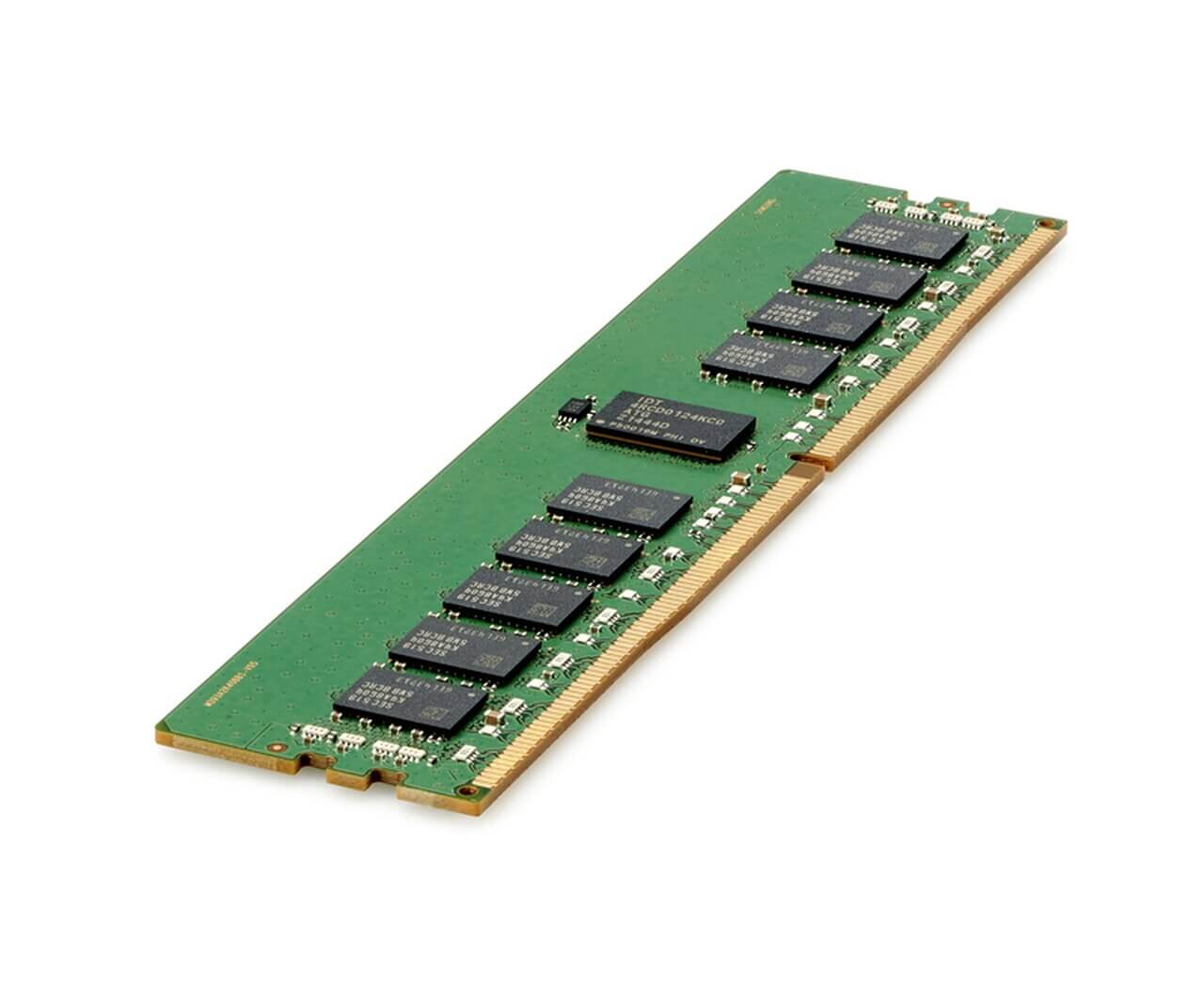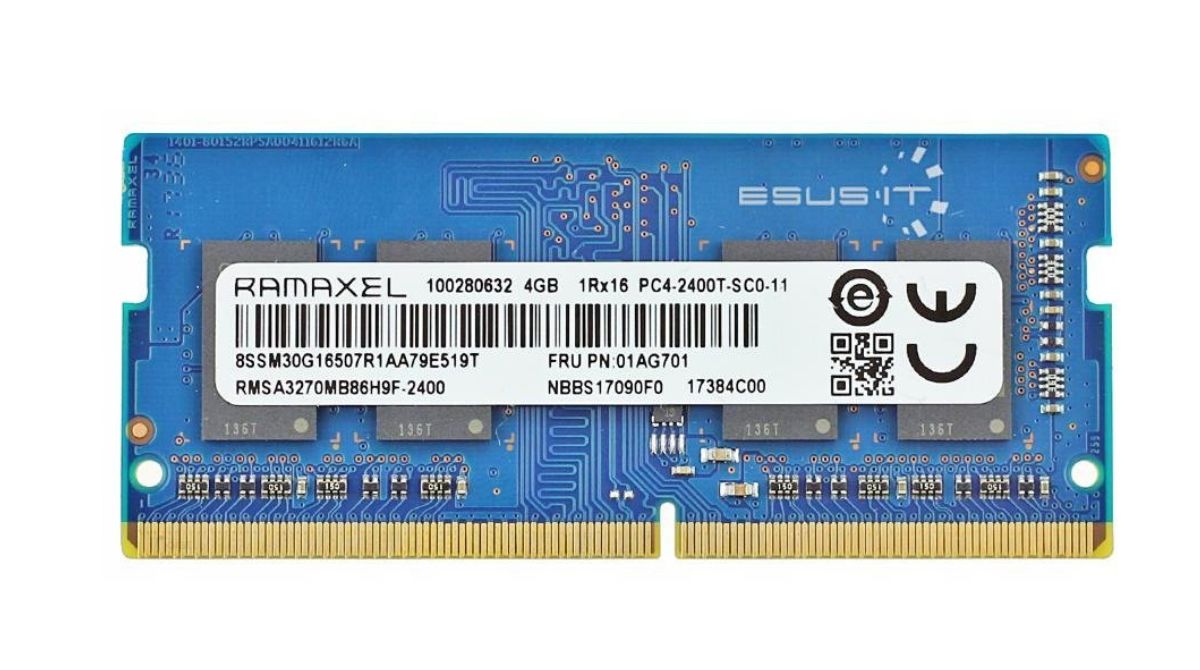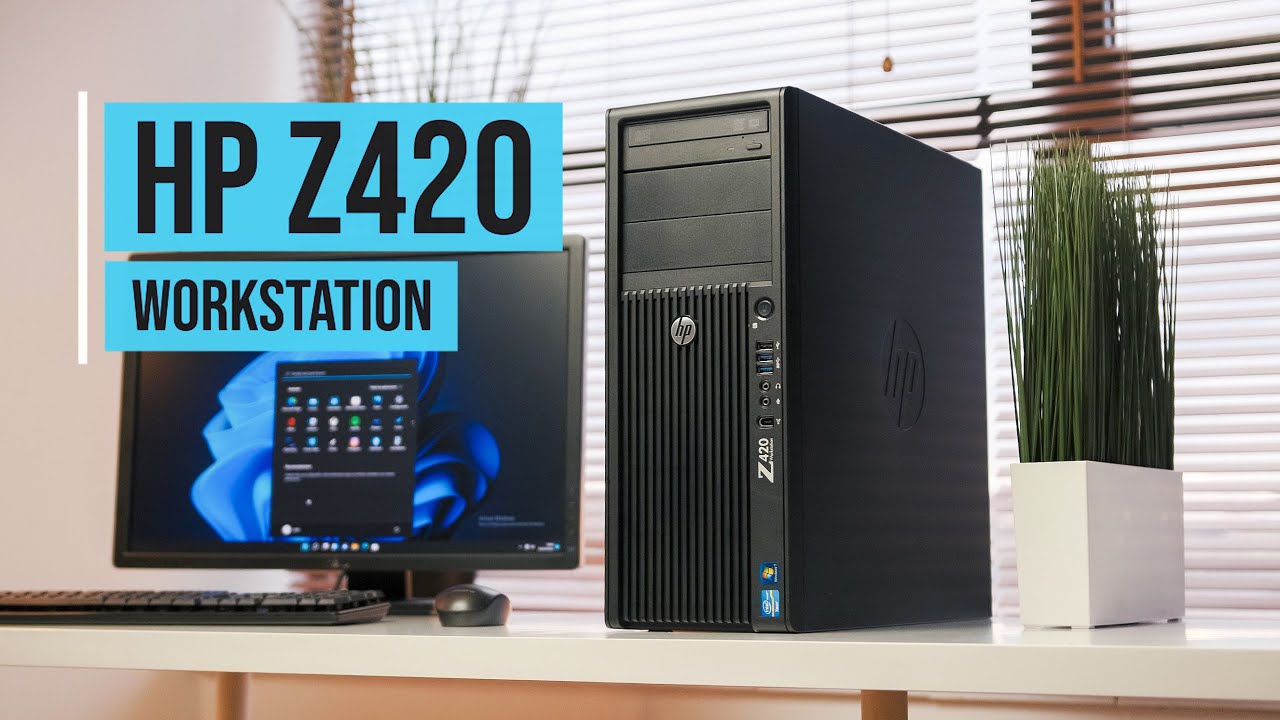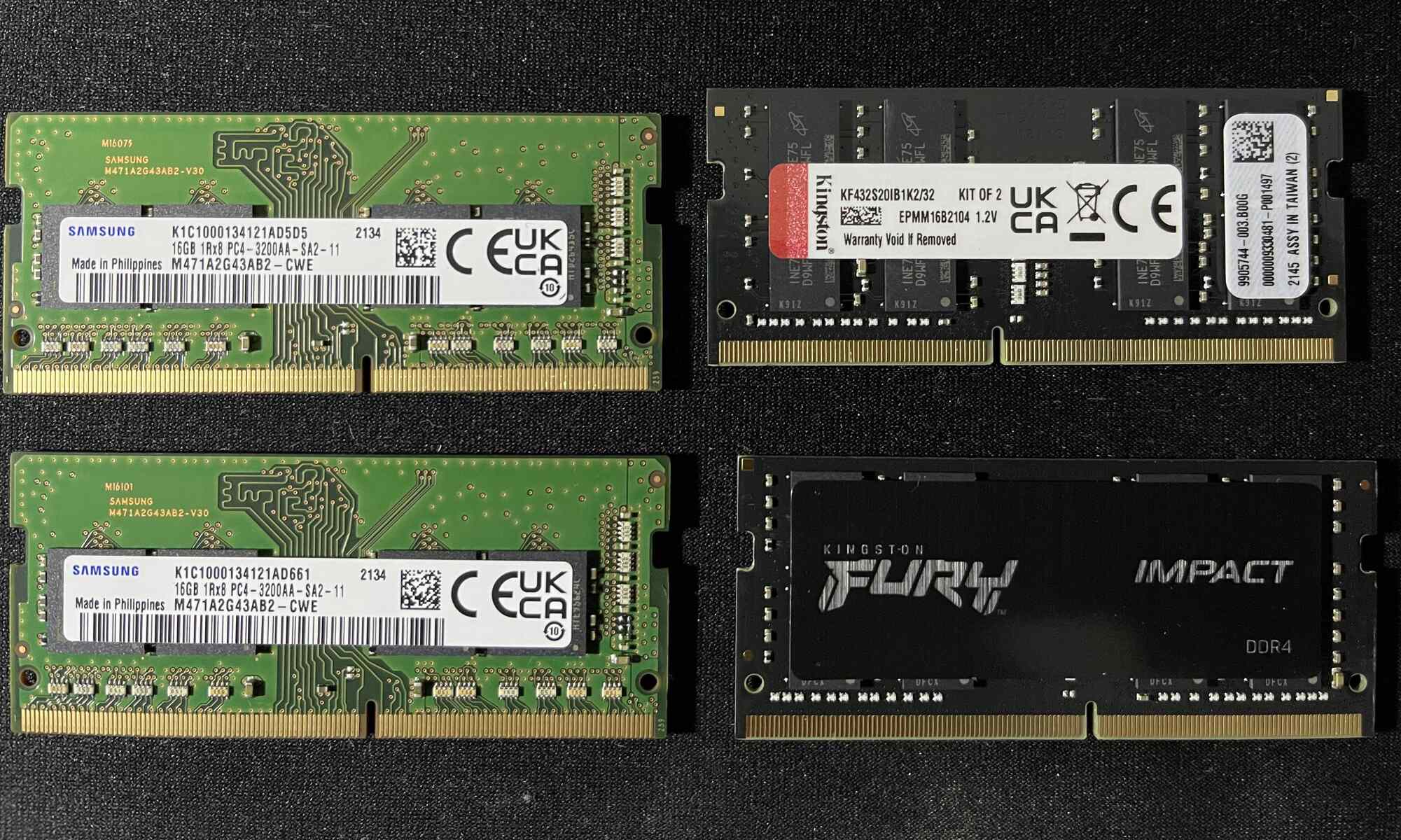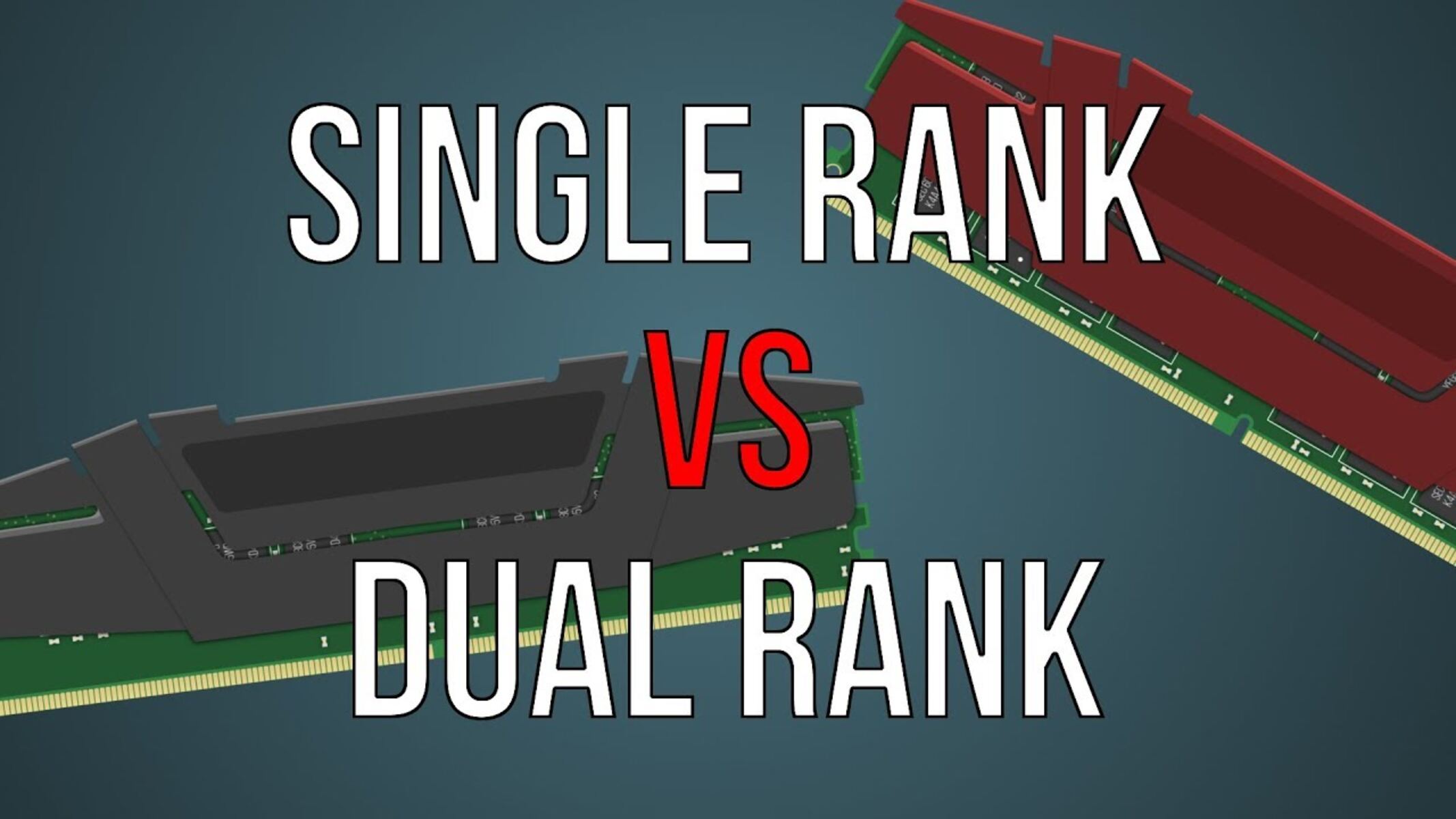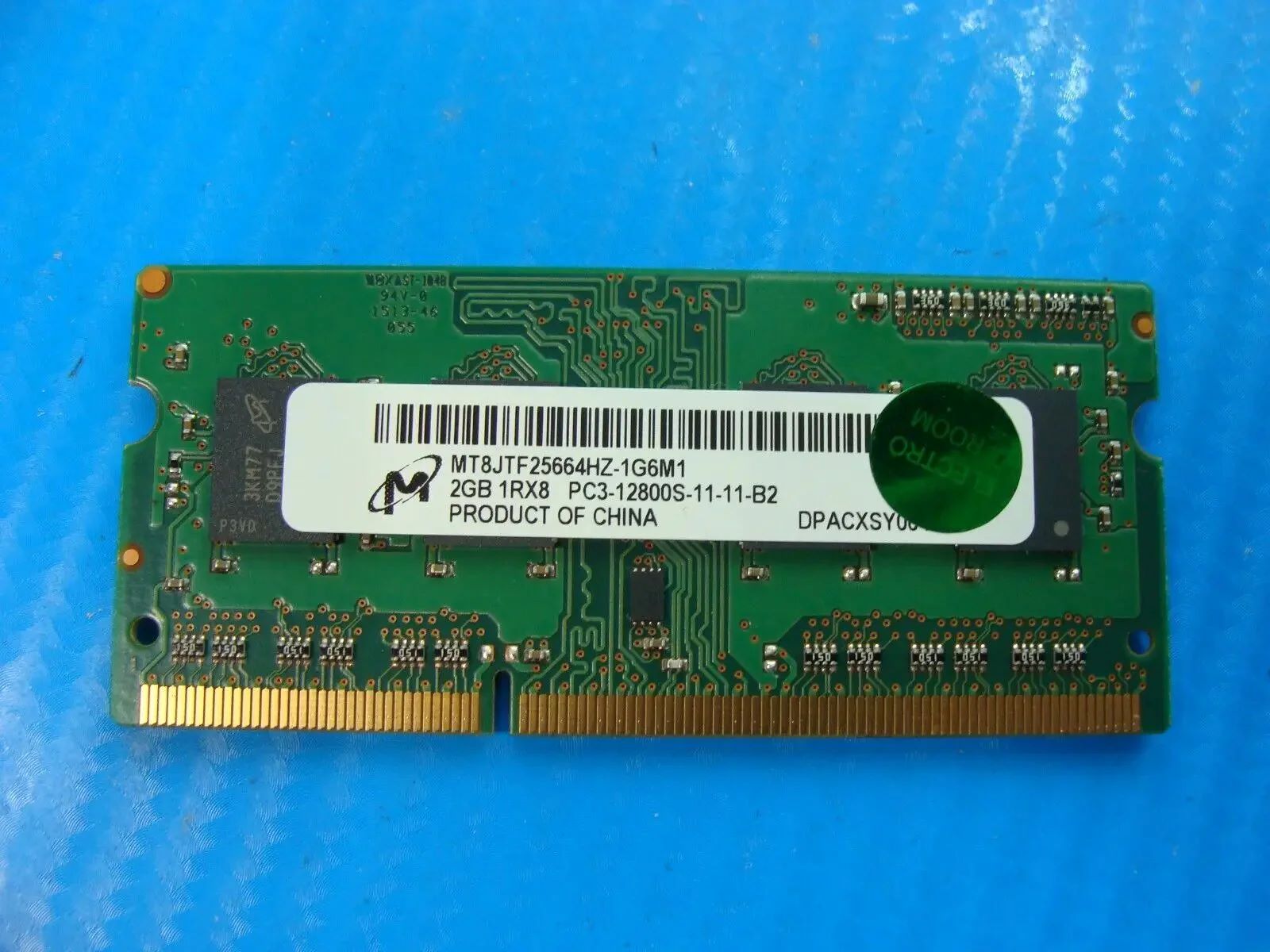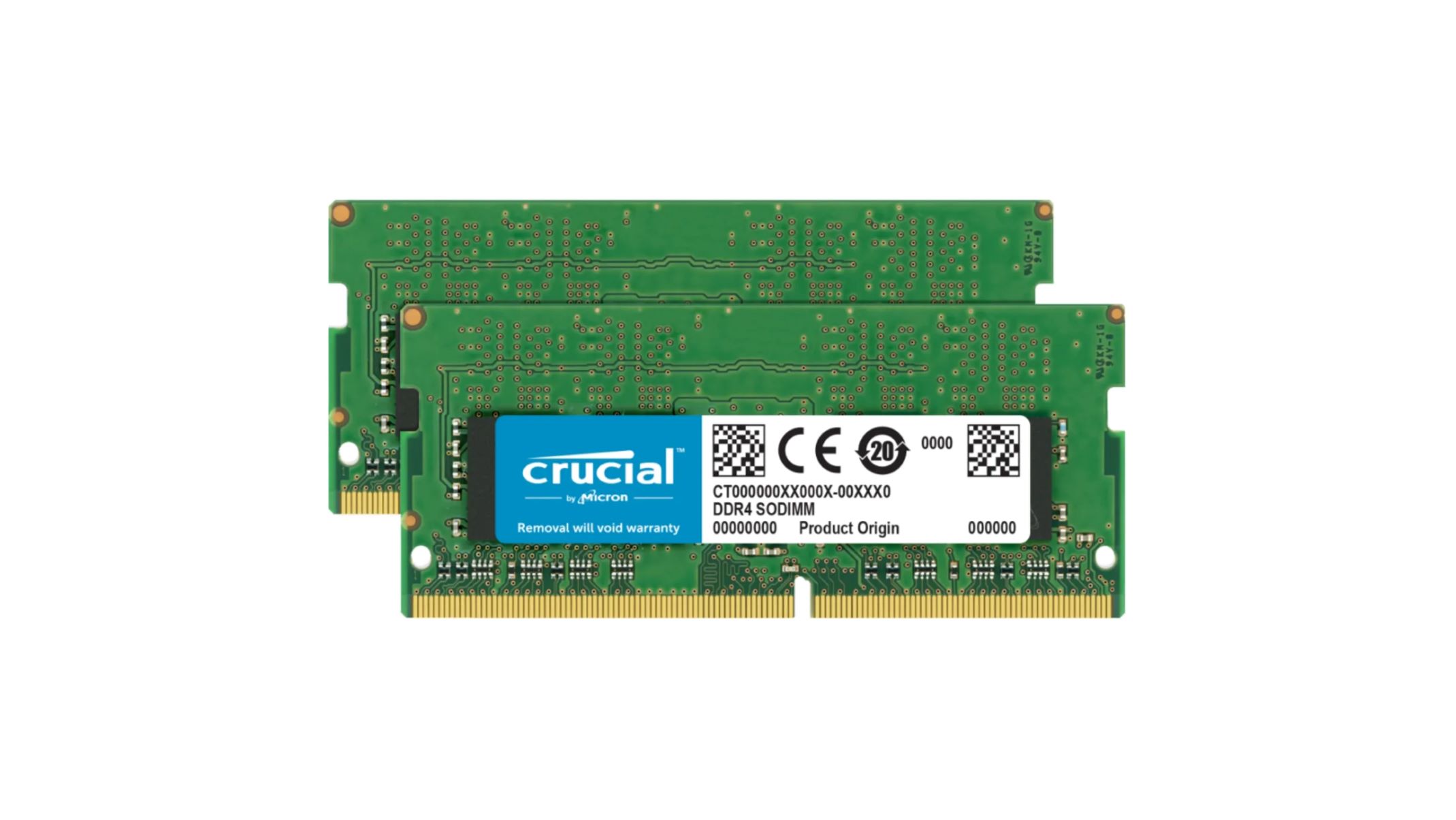What is RAM?
RAM, or Random Access Memory, is a crucial component in a computer system that plays a vital role in its performance. It is a type of computer memory that allows data to be read from and written to by the computer’s processor, providing fast and temporary storage for information that the system needs to access quickly.
Think of RAM as a workspace for your computer. When you open a program or file, it gets loaded into RAM so that the processor can access it quickly. This allows for faster data retrieval and processing compared to accessing information from the hard drive or other storage devices.
RAM is a volatile form of memory, meaning it requires power to hold data. When you turn off your computer, the data stored in RAM gets erased. Therefore, it is important to save your work and files on a non-volatile storage device, such as a hard drive or solid-state drive.
RAM comes in various sizes, typically measured in gigabytes (GB). The more RAM your computer has, the more data it can store temporarily, allowing for smoother multitasking and improved overall performance. However, it’s worth noting that having excessive RAM beyond what your system requires will not provide any noticeable performance benefits.
In addition to size, RAM also has different speed ratings, commonly referred to as the RAM’s frequency. Higher frequency RAM can deliver faster data transfer rates, which can translate into improved system responsiveness.
Overall, RAM plays a critical role in ensuring your computer operates smoothly and efficiently. It acts as a bridge between the processor and storage devices, facilitating faster data access and manipulation, ultimately enhancing the overall performance of your system.
What is Dual Rank RAM?
Dual Rank RAM refers to a type of memory configuration found in RAM modules. RAM modules can be single rank or dual rank, depending on the number of memory banks and chips they contain. In a dual rank configuration, the memory module contains two sets of memory banks or arrays, which can be accessed simultaneously.
To better understand the concept, think of dual rank RAM as having two rows of memory cells instead of one. Each rank operates independently, allowing the system to access data from multiple memory cells simultaneously. This can result in improved performance and increased data throughput compared to single rank RAM.
It’s important to note that dual rank RAM does not necessarily mean double the capacity of single rank RAM. The capacity of the RAM module is determined by the size of each memory bank or array, which can vary depending on the specific module. So, while dual rank RAM may provide better performance, it doesn’t necessarily mean it has more capacity.
Dual rank RAM can be found in various types, including DDR3, DDR4, and DDR5. It is commonly used in desktop computers, servers, and workstations where higher memory bandwidth is desired. It can help improve multitasking capabilities and overall system performance, especially in scenarios that involve heavy data processing, virtualization, or running memory-intensive applications.
It’s worth mentioning that the compatibility of dual rank RAM with a specific system depends on various factors, such as the motherboard’s memory controller and supported memory configurations. Not all systems or motherboards may support dual rank RAM, so it’s essential to consult the motherboard specifications or documentation to verify compatibility.
In summary, dual rank RAM refers to a memory configuration that includes two sets of memory banks or arrays. It provides the ability to access data from multiple memory cells simultaneously, resulting in improved performance and increased data throughput. It is commonly used in desktop computers, servers, and workstations to enhance multitasking capabilities and overall system performance.
How does Dual Rank RAM differ from Single Rank RAM?
When it comes to RAM, there are two main types of configurations: single rank and dual rank. These configurations refer to the organization and structure of the memory modules. Understanding the differences between single rank and dual rank RAM can help you make informed decisions when upgrading your system’s memory.
The primary difference between single rank and dual rank RAM lies in the number of memory modules or banks within the RAM module. A single rank RAM module has a single set of memory banks, while a dual rank RAM module contains two sets of memory banks.
One of the key impacts of this difference is how the system accesses data from the memory modules. With single rank RAM, the system accesses data in a linear manner, meaning it transfers data sequentially from one memory bank to another. In contrast, dual rank RAM allows for simultaneous access to multiple memory banks. This means that the system can retrieve and process data from two sets of memory banks simultaneously, leading to improved performance.
Another aspect that distinguishes single rank and dual rank RAM is the memory addressing limitations. Single rank RAM has a smaller number of memory addresses compared to dual rank RAM. This means that single rank RAM can address a smaller amount of data at a time. On the other hand, dual rank RAM has more memory addresses available, allowing for a larger amount of data to be addressed and accessed simultaneously.
The performance difference between single rank and dual rank RAM can vary depending on the specific workload and use case. In scenarios where a high volume of data needs to be processed simultaneously, such as in tasks that involve heavy multitasking or extensive data manipulation, dual rank RAM can offer noticeable performance benefits. However, for everyday computing tasks and typical usage, the difference may not be as significant.
It’s important to note that the compatibility of single rank and dual rank RAM with your system depends on factors such as the motherboard’s memory controller capabilities and supported memory configurations. Some systems may support only single rank RAM, while others may be compatible with both single rank and dual rank options.
In summary, the main differences between single rank and dual rank RAM lie in the number of memory banks and the way data can be accessed. Dual rank RAM allows for simultaneous access to two sets of memory banks, leading to improved performance in certain scenarios. However, the actual impact on performance can vary depending on the workload and system compatibility.
Why does Dual Rank RAM matter?
Dual rank RAM can have a significant impact on system performance and can be beneficial in certain computing scenarios. Understanding why dual rank RAM matters can help you determine if it’s the right choice for your system’s memory needs.
One of the primary reasons why dual rank RAM matters is its potential to enhance memory bandwidth. Memory bandwidth refers to the rate at which data can be read from or written to the RAM. With dual rank RAM, the system can access data from multiple memory banks simultaneously, increasing the overall memory bandwidth. This can result in faster data transfer rates and improved system responsiveness, especially when dealing with memory-intensive tasks or running applications that require high-speed data access.
Dual rank RAM can also improve multitasking capabilities. Since the system can access data from two sets of memory banks simultaneously, it can handle multiple tasks more efficiently. This can be especially beneficial in scenarios where you frequently switch between multiple applications or work with resource-demanding software.
Another advantage of dual rank RAM is its potential to optimize data access patterns. The simultaneous access to multiple memory banks allows for parallel data retrieval, reducing latency and improving overall efficiency. This can be particularly advantageous for memory-bound applications that heavily rely on quick data access, such as video editing or 3D rendering.
However, it’s important to note that the benefits provided by dual rank RAM may not be noticeable in all computing scenarios. For everyday tasks and typical usage, the difference in performance between dual rank RAM and single rank RAM may not be significant. It is primarily in memory-intensive applications, multitasking scenarios, or workloads that demand high-speed data processing where the benefits of dual rank RAM become more apparent.
Compatibility is another factor to consider when determining the importance of dual rank RAM. Not all systems or motherboards support dual rank RAM. Before deciding to upgrade or purchase dual rank RAM, it’s crucial to consult the motherboard’s documentation or specifications to ensure compatibility.
In summary, dual rank RAM matters because it offers the potential to enhance memory bandwidth, improve multitasking capabilities, and optimize data access patterns. It can provide noticeable performance benefits in memory-intensive tasks and scenarios that demand high-speed data processing. However, the actual impact on performance depends on the specific workload and system compatibility.
How to determine if RAM is Dual Rank?
Determining whether RAM is dual rank or not requires some investigation and verification. There are several methods you can use to determine the rank configuration of your RAM modules:
Method 1: Check the Specification Sheet
The easiest and most reliable method is to refer to the specification sheet or documentation provided by the manufacturer. The specification sheet will typically indicate whether the RAM module is single rank or dual rank. It should provide detailed information about the memory module’s configuration, including the rank structure.
Method 2: Use Third-Party Software
There are various third-party software applications available that can provide detailed information about the hardware components in your system, including the rank configuration of your RAM. Programs such as CPU-Z, HWiNFO, or Speccy can provide comprehensive details about your RAM’s rank configuration.
After installing the software, launch it and navigate to the memory or RAM section. Look for information related to the rank configuration. It will typically indicate whether the RAM is single rank or dual rank.
Method 3: Physically Inspect the RAM
In some cases, you can determine the rank configuration by physically inspecting the RAM modules. Dual rank modules often have chips on both sides of the module, while single rank modules may have chips on only one side. If you can access your RAM modules, carefully remove them and visually inspect both sides to see if there are chips present on both sides.
Please note that physically inspecting the RAM should be done with caution, as mishandling or improper installation can damage the modules or other components in your system.
Method 4: Consult the Manufacturer’s Website or Support
If you are unable to find the necessary information through the first three methods, you can visit the manufacturer’s website or contact their support for assistance. Manufacturers often provide detailed specifications for their RAM modules on their websites, including the rank configuration. Support representatives can also help answer any questions you may have regarding the rank configuration of your RAM.
It’s worth mentioning that the rank configuration of RAM is not always crucial for every user or system. For general usage or typical tasks, the difference between single rank and dual rank RAM may not be significant. However, in specific situations where memory-intensive applications or multitasking is involved, understanding the rank configuration can be valuable in optimizing system performance and compatibility.
Method 1: Check the Specification Sheet
One of the most straightforward and reliable methods to determine if RAM is dual rank is by checking the specification sheet or documentation provided by the RAM manufacturer. The specification sheet contains detailed information about the RAM module, including its rank configuration.
To find the specification sheet, you can visit the manufacturer’s website and look for the product page of the RAM module you have or intend to purchase. On the product page, there should be a downloadable specification sheet or a link to view the detailed specifications. This sheet will typically provide all the necessary information about the RAM, including whether it is single rank or dual rank.
Once you have accessed the specification sheet, look for the section that outlines the RAM’s configuration. It may be labeled as “Rank Configuration,” “Memory Configuration,” or something similar. In this section, the rank configuration will be specified as either single rank or dual rank.
Make sure to cross-check the information provided in the specification sheet with the specific model or part number of the RAM module you have or plan to purchase. Different models or versions of RAM modules from the same manufacturer may have different rank configurations.
If you are unable to find the specification sheet on the manufacturer’s website, try reaching out to their customer support for assistance. They should be able to provide you with the necessary information regarding the rank configuration of the RAM module.
Checking the specification sheet is a reliable way to determine the rank configuration of your RAM module as the information is provided directly by the manufacturer. It ensures accurate and up-to-date details about the RAM’s configuration and compatibility with your system.
By utilizing this method, you can confidently verify whether your RAM is dual rank or not and make informed decisions regarding your system’s memory configuration and performance.
Method 2: Use Third-Party Software
Another way to determine if RAM is dual rank is by using third-party software that provides detailed information about your computer’s hardware components, including the rank configuration of your RAM modules. This method offers convenience and accessibility, allowing you to gather information without physically inspecting the hardware or searching through specification sheets.
There are several popular third-party software applications available that can provide comprehensive details about your system’s hardware. Examples of such software include CPU-Z, HWiNFO, and Speccy, among others. These applications are easy to use and provide in-depth information about various hardware components, including the RAM’s rank configuration.
To use this method, follow these steps:
- Download and install the preferred third-party software on your computer.
- Launch the software and navigate to the memory or RAM section. The exact location may vary depending on the software, but it is typically labeled as “Memory” or “RAM”.
- Look for information related to the rank configuration of your RAM modules. The software should provide details about whether your RAM is single rank or dual rank.
The information provided by third-party software is usually accurate and reliable. It displays real-time data and can help you verify the rank configuration of your RAM modules quickly and conveniently.
It’s important to note that different software applications may present information differently or offer varying levels of detail. Some software may provide a straightforward indication of the rank configuration, while others may present technical details and specifications about your RAM module, including the rank configuration.
While third-party software is a convenient method, it is always a good practice to cross-check the information provided by the software with other methods, such as checking the specification sheet or physically inspecting the RAM modules, to ensure accurate results.
By utilizing third-party software, you can easily gather detailed information about your computer’s hardware components, including the rank configuration of your RAM modules. This allows for quick and reliable verification of whether your RAM is single rank or dual rank.
Method 3: Physically Inspect the RAM
If you want to determine if your RAM is dual rank, one method is to physically inspect the RAM modules themselves. This method allows you to visually examine the modules and look for physical indications of their rank configuration. However, it’s important to handle the RAM with care to avoid damage to the components or other parts of your system.
Here are the steps to physically inspect the RAM:
- Ensure you have proper grounding by touching a grounded metal surface or wearing an anti-static wristband.
- Power off your computer and disconnect any power sources.
- Open your computer case following the manufacturer’s instructions.
- Locate the RAM modules on your motherboard. They are usually long rectangular modules plugged into slots.
- Carefully remove the RAM modules by pressing outward on the retaining clips or levers on both ends of the module.
- Examine both sides of the RAM modules for the presence of memory chips.
- If you see chips on both sides of the RAM module, it is likely a dual rank module. If chips are present on only one side, it is likely a single rank module.
- Take note of this information for each RAM module you inspect.
Physically inspecting the RAM modules is a straightforward method but requires caution to avoid damaging the RAM or other components in your system. Ensure you follow proper handling procedures, such as grounding yourself and handling the RAM gently.
It’s important to note that physically inspecting the RAM modules may not be possible in some cases, such as in laptops or prebuilt computers where the RAM is not easily accessible. In these situations, you may need to rely on other methods, such as checking the specification sheet or using third-party software, to determine the rank configuration of the RAM.
Remember to consult your motherboard’s documentation or specifications to understand the maximum memory configurations and any limitations or requirements related to the rank configuration of the RAM modules.
By physically inspecting the RAM, you can visually determine whether it is single rank or dual rank. This method can provide valuable information and help you make informed decisions about your system’s memory configuration.
Method 4: Consult the Manufacturer’s Website or Support
If you are unable to determine the rank configuration of your RAM using other methods, you can consult the manufacturer’s website or reach out to their support for assistance. The manufacturer’s website often provides detailed information about their RAM modules, including the rank configuration.
Here are the steps to follow when consulting the manufacturer’s website or support:
- Visit the manufacturer’s website and navigate to the support or product section.
- Search for the specific model or part number of your RAM modules.
- Look for detailed specifications or documentation related to the RAM modules.
- Check if the rank configuration is provided in the specifications or other relevant information.
- If you are unable to find the necessary information on the website, look for a support or contact section.
- Reach out to the manufacturer’s support through email, phone, or live chat.
- Provide them with the relevant details, such as the specific model or part number of your RAM modules.
- Ask for assistance in determining the rank configuration of your RAM.
The manufacturer’s website is an excellent resource as it provides accurate and up-to-date information about their products. If the rank configuration details are not readily available on the website, contacting their support is the next best option. The support team should be able to answer your queries and provide the necessary information related to the rank configuration of your RAM modules.
While waiting for a response from the support team, it’s worthwhile to explore other methods, such as checking the specification sheet or using third-party software, to see if you can find the required information independently.
By consulting the manufacturer’s website or support, you can obtain accurate and reliable information about the rank configuration of your RAM modules. This ensures that you have the correct information and can make informed decisions regarding your system’s memory configuration.
Conclusion
Determining whether your RAM is dual rank or single rank is crucial for understanding your system’s memory configuration and potential performance. By using various methods such as checking the specification sheet, using third-party software, physically inspecting the RAM modules, or consulting the manufacturer’s website or support, you can confidently identify the rank configuration of your RAM.
Checking the specification sheet provided by the manufacturer is a reliable method as it directly provides accurate information about the RAM’s rank configuration. Third-party software can also be helpful, offering a convenient way to retrieve detailed hardware information, including the rank configuration. Physically inspecting the RAM modules allows for a visual assessment, although caution should be taken to prevent any damage. Consulting the manufacturer’s website or support is another helpful option, as they can provide specific information about your RAM modules.
Understanding the rank configuration of your RAM can help you determine its potential impact on memory bandwidth, multitasking capabilities, and overall system performance. Dual rank RAM, in particular, can offer improved performance in memory-intensive tasks and scenarios that demand high-speed data processing.
It’s important to note that the rank configuration may not significantly affect everyday computing tasks or typical usage. However, for those engaging in resource-intensive activities such as gaming, video editing, or running memory-demanding applications, the rank configuration of your RAM can be a valuable consideration.
By using the methods described in this guide, you can confidently determine the rank configuration of your RAM and make informed decisions when upgrading or optimizing your system’s memory. Whether you have single rank or dual rank RAM, understanding its configuration will contribute to maximizing your system’s performance and ensuring compatibility with your specific computing needs.







